Every year as an elementary school teacher, I bake with my class on at least one occasion if not more. It’s a great activity for bonding as a group, the kids learn so much, and we have a fun treat to share at the end of it. When my 2.5 year old son, Onetime, was old enough to hold a spoon, we started baking together too.

After all these experiences, I have a few tips to share on baking with kids to make it a smooth and fun experience for everyone. First, let’s start with the benefits. Why should you take the time to do this with your kids?
 8 Benefits of Baking With Kids
8 Benefits of Baking With Kids
Benefit #1: Baking Builds Math Skills
Kids learn all kinds of mathematical concepts while baking.
When they are helping to dump 3 cups of flour into a bowl, they are counting. When they help to measure 1/2 a cup of sugar, they are learning about parts of wholes and fractions. When they are helping you ensure that 1 cup of milk is lined up with the line on the measuring cup, they are learning about volume and capacity and the accuracy of measurement.
Kids also learn through experience about the differences between a tablespoon and teaspoon, a cup and a litre, a gram and a pound. I could go on and on!
Benefit #2: Baking Enriches Oral Vocabulary
I’m always surprised each year that I bake with my elementary students, when kids do not know what certain words on a recipe mean. For example, words like beat, whip, cream, and sift are important words to know when cooking, but may need some explanation (and demonstration!)
Benefit #3: Baking Teaches Scientific Concepts
There are lots of opportunities to add in some scientific learning while baking. You can talk about temperature and how we use degrees to measure it.
If your recipe calls for baking soda, you can talk about how it is used to help make breads and cookies rise by releasing carbon dioxide bubbles in the batter when mixed with an acid and exposed to heat. If you’re looking for other ways to demonstrate the effects of baking soda mixed with an acid, try #2 from our fun Simple Sensory Activities post or do our mesmerizing Hopping Corn science experiment.
If you decide to try our awesome chocolate chip cookie recipe below, you can measure out the 1 cup margarine/butter using the displacement method. Fill a large measuring cup with 1 cup of water, then have your child add in scoops of margarine until the water line rises to 2 cups. You can talk about how the butter displaces an equal amount of water. (Definitely for older learners – but fun even for little ones!)
Benefit #4: Baking Boosts Reading Skills
Recipes are a kind of non-fiction text called Procedural (translation: they have steps!).
Learning to follow the steps of a recipe is an important reading skill that will translate later into your child being able to understand how to read directions of any kind, such as for setting up a new stereo, or fixing a broken engine, or putting together some IKEA furniture!
Benefit #5: Baking Introduces Life Skills
Basically, it gets kids into the kitchen, creating something that they can enjoy! It’s a great way to get boys interested in cooking and what future wife won’t appreciate a man who can cook?
It builds self-esteem by giving kids the skills they need to feed and look after themselves as they grow.
Also – it can be a nice way for kids to show they are grateful to others – by baking a batch of cookies or muffins for a neighbour or favourite coach or teacher. Kids can also use baking as a gesture of friendliness to others.
Benefit #6: Baking Develops Fine-Motor Skills
For young children, baking provides fun fine-motor practice. When holding a spoon, kids are developing and strengthening their pincer grasp (needed for writing). To have them pick up the spoon using the pincer grasp, try placing it on the counter with the ladle facing their body. When they flip the spoon, it will be in a pincer grasp!
Also, when they are stirring, they are building hand-eye coordination. When they are holding the bowl so it doesn’t spin while they are stirring, they are learning to coordinate different movements at the same time.
Benefit #7: Baking Promotes Social Skills
If you bake with a few kids, there’s a lot of social negotiation that has to occur. Who is going to do what? and Whose turn is it? are both critical social lessons that apply to all sorts of situations. Even if it’s just you and one child, you are still modelling turn-taking and waiting skills.
Benefit #8: Baking Provides Fun “Connect” Time
If you keep things simple and follow my 10 tips below, you should have a successful experience (or many!) that will be remembered and cherished by your child.
I have very fond memories of baking cookies in the kitchen with my mom and still feel that special closeness when I’m baking on my own or with my son. For other fun ways to connect with your child – check out this post: 30 Joyful Ways to Connect With Your Child in 10 Minutes.
And now without further adieu – my top 10 ways to make baking with your kids a successful and FUN experience!
TOP 10 TIPS for BAKING WITH KIDS
Tip #1: Get out all the ingredients first.
Spread them out on a clean surface with lots of room.
Tip #2: Have all your supplies ready and close at hand.
Make sure you have bowls, multiple spoons (one for each child), measuring cups and spoons, and cookie trays all out.
Place them close to each ingredient that they will be used to hold or measure. You can even order the ingredients on the table or counter so that you work left to right!
Tip #3: Be prepared for a mess!
Have paper towels handy and/or a wet cloth to wipe up spills right away. Talk to your child ahead of time about how messes will be handled. Remember, it’s best to clean up as you go so there aren’t any slips!
Tip #4: Read the recipe beforehand so you’re very familiar with it.
As you are baking, refer constantly to the recipe and read the instructions out loud so your child can hear, or if your child can already read, have them read out each step.
Tip #5: Talk to your child or children beforehand about what you’re going to do and how they are going to participate.
Make sure they know that they won’t be involved in putting things into or taking things out of the oven. But that they can watch from a safe distance!
Tip #6: If it’s your first time baking with kids, or you have a toddler, choose a simple recipe.
Think pancake mix or muffin mix that only needs eggs and milk added. You can work up to souffles as your children grow! Remember, it’s the experience and learning that’s important, not how complicated the final product is!
 Tip #7: If you have more than one child that you want to involve, have them figure out who is going to add each ingredient and do each part of the recipe beforehand.
Tip #7: If you have more than one child that you want to involve, have them figure out who is going to add each ingredient and do each part of the recipe beforehand.
With a small group of kids (and I wouldn’t ever bake with more than 3 at a time), let the kids decide what parts of the recipe they want to measure and stir, etc. Great for developing negotiation skills for those future lawyers!
Tip #8: While you are baking, if you have a very young child or an eager one (translation: impulsive) like mine, try putting all the ingredients out of reach until it’s time to add it.
This way, you won’t turn your back for a second to check the oven, and then find your child has dumped half the box of salt into the cookie mix (speaking from real experience!)
Tip #9: Try allowing your child to create their own recipe!
Do you remember that old 70’s kids cooking show Just Like Mom? I loved watching those kids create cookie recipes on their own so their moms could try and guess which cookie had been made by their child! The kids always looked like they were having a blast too! What an exercise in creativity!
Tip #10: Make a big deal about taste-testing the results together.
Use the special dishes or set out nice paper napkins and a glass of juice or chocolate milk with your treat! Even better, invite some friends over to taste test too!
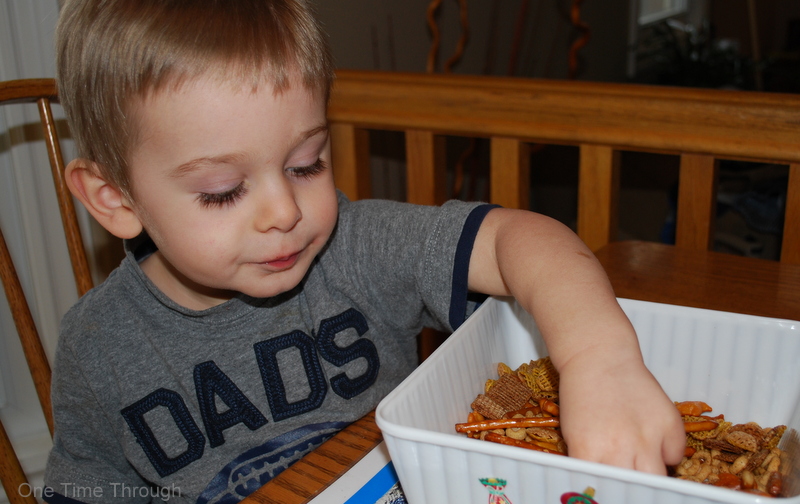
I’ve also included my favourite Sugar Cookie recipe – lots of fun for cutting out shapes for Christmas time or Valentines Day!
I’d love to hear any baking or cooking tips for kids that you have – or your thoughts on today’s post. Please leave a comment. They really make my day!
Happy Baking!
Follow us on Pinterest!
Follow One Time Through’s board One Time Through BLOG on Pinterest.
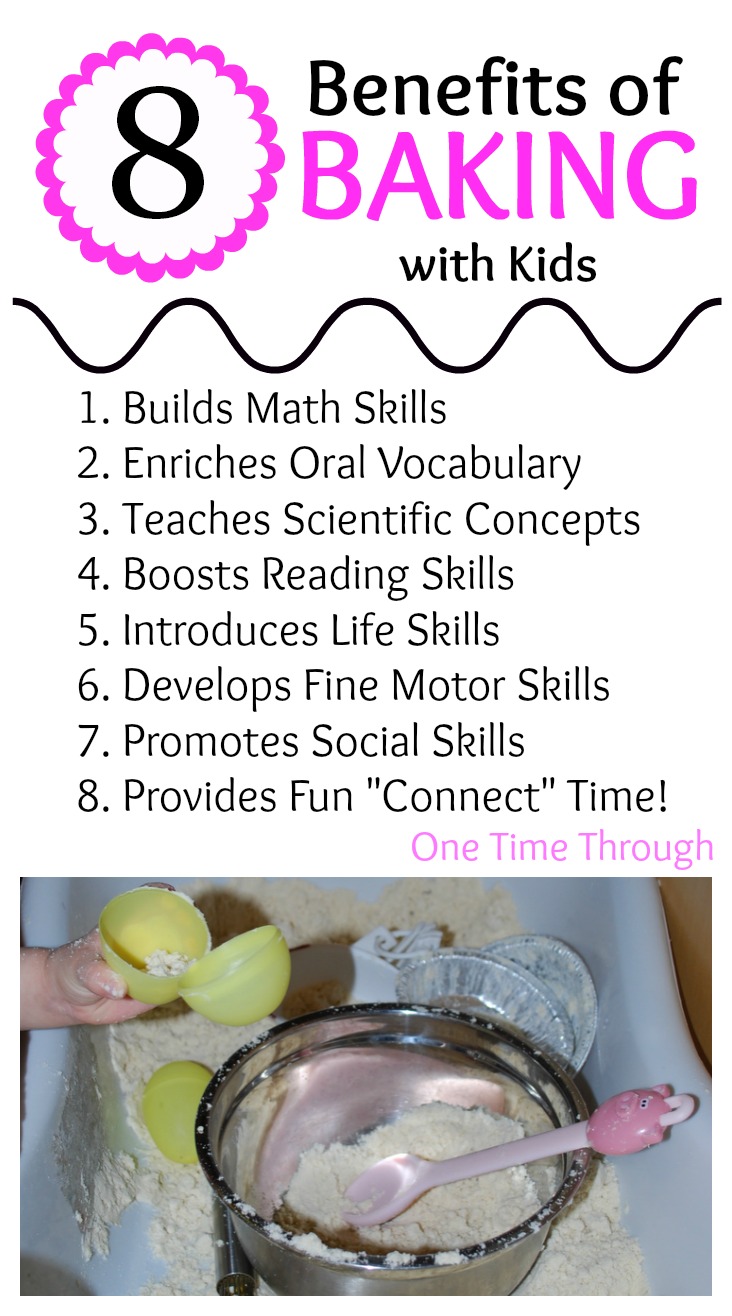
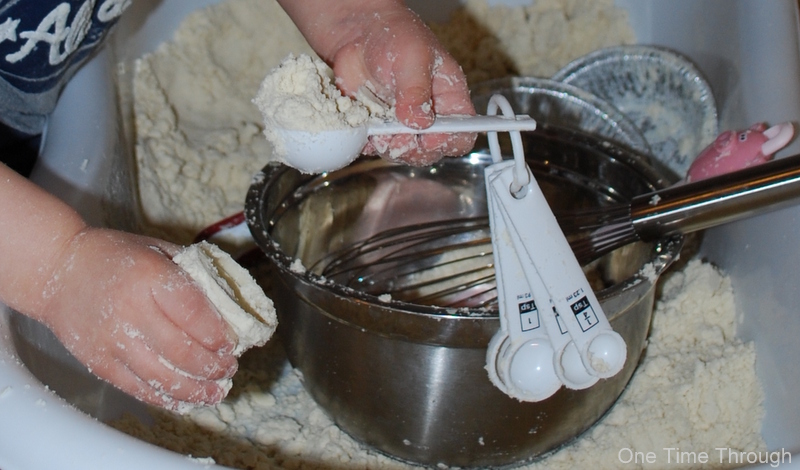
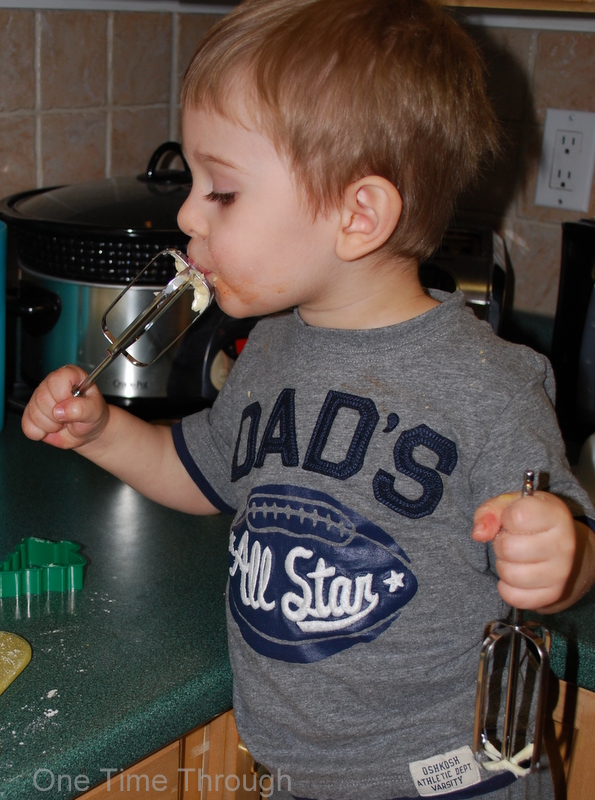
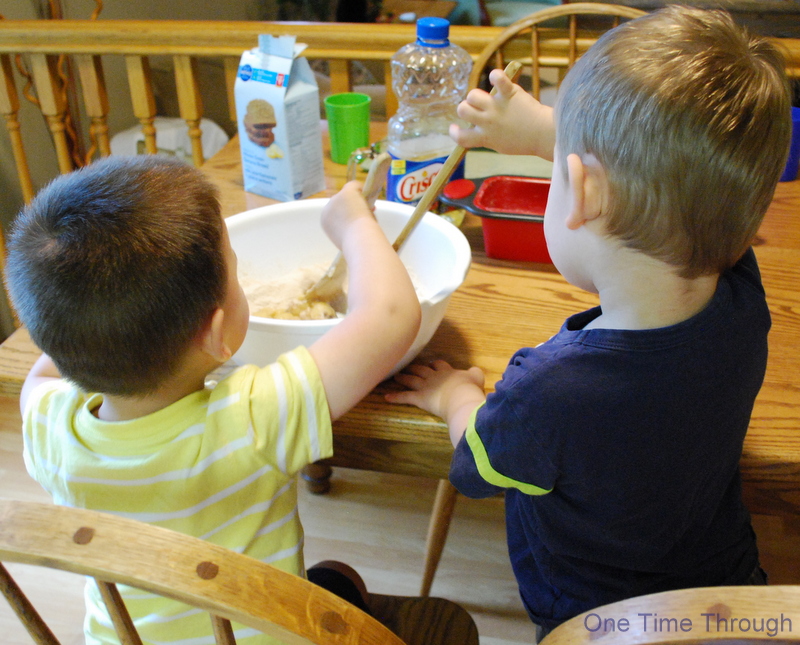
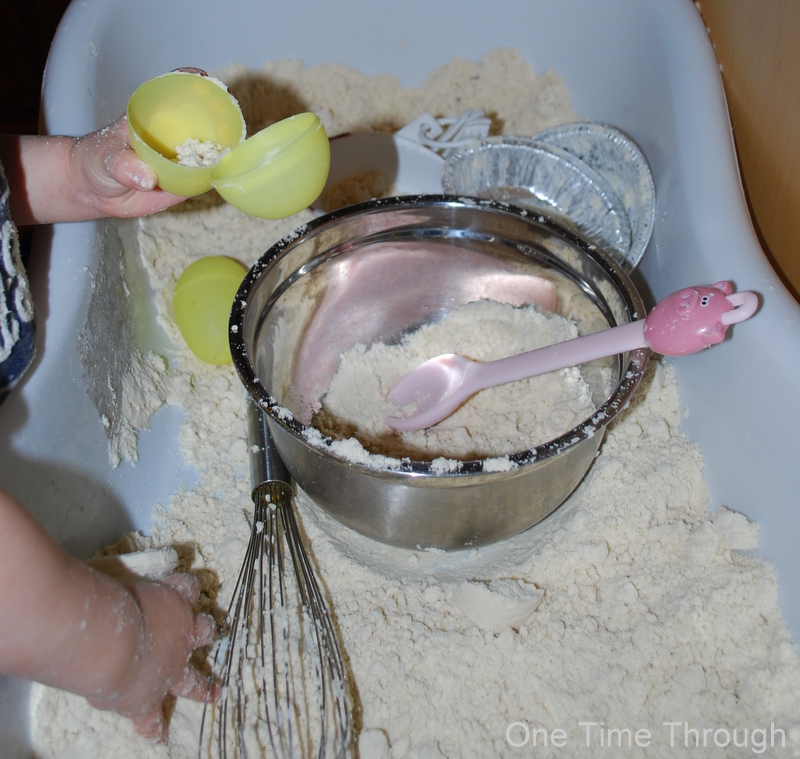
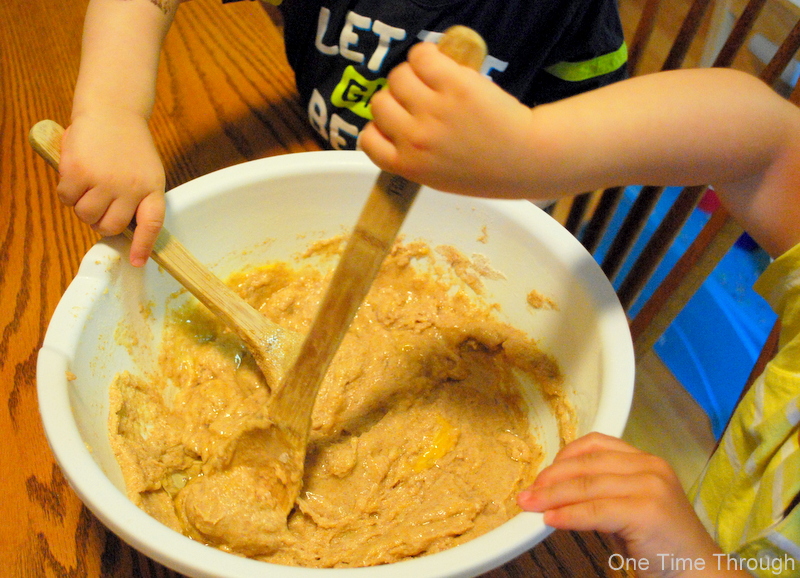

So true! Great post! These are many of the reasons I cook with my toddler at home!
Thanks for dropping by Ashlee! It’s always an adventure – that’s for sure. How do you get your little one helping out? I’d love to hear!